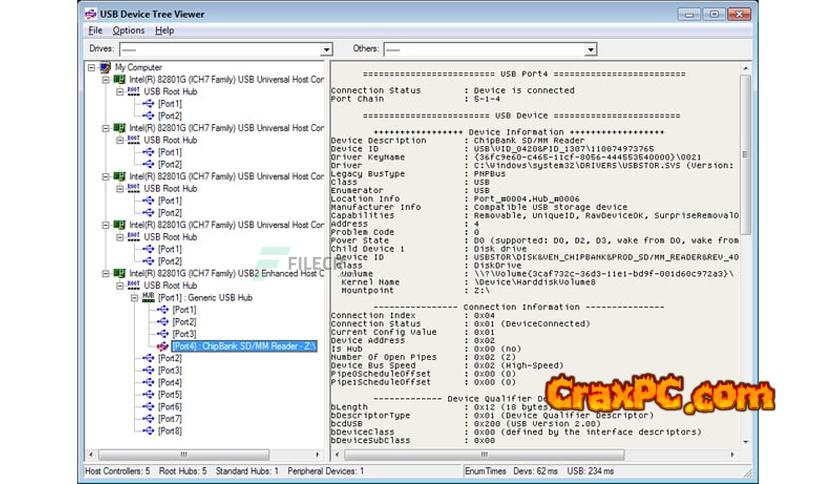USB Device Tree Viewer latest version standalone offline installer for Windows is available for free download. It facilitates rapid data retrieval from the USB host controllers.
A Synopsis of the USB Device Tree Viewer
The purpose of this application is to facilitate rapid access to data pertaining to the USB host controllers and devices that are linked to your computer.
This application, which is built upon the USBView sample application included in the Windows Driver Kit by Microsoft, provides end users with a user-friendly graphical user interface that facilitates the storage of USB devices and terminals.
Despite its intuitive interface, USB Device Tree Viewer is primarily designed for technologically proficient users who possess the ability to analyze and implement the information presented.
It examines the configuration of your system and presents information regarding the connected host controllers, including the manufacturer and drivers.
Constraints of the USB Device Tree Viewer
Data obtained from Windows Device Management is compiled and compared with the USB devices that were discovered.
Display the offspring devices, COMports and drive letters
Window orientation saved
It is possible to modify the background color and font of the right pane.
Maintains the selection of tree items over a refresh
TreeView that emphasizes newly added and removed devices
Indicates open handles when secure removal fails
Significantly more descriptors are decoded, as they can be displayed in Audio 2.0 Hexdump format.
Port restart, secure removal, and device resume
Information regarding extended USB capabilities in Windows 8 and 10 (extracted from the most recent USBView prototype application)
Detailed information concerning host controllers
In the background, failed USB queries are retried; for instance, if the USB mouse was moved while its properties were being requested.
Jump list-equipped toolbar for rapidly locating devices in complex trees
Specifications Technical and System Requirements
Windows 10, Windows 8.1, and Windows 7 are supported operating systems.
RAM (Memory): 2 GB; however, 4 GB is advised.
Free space on the hard drive: 200 MB or more



